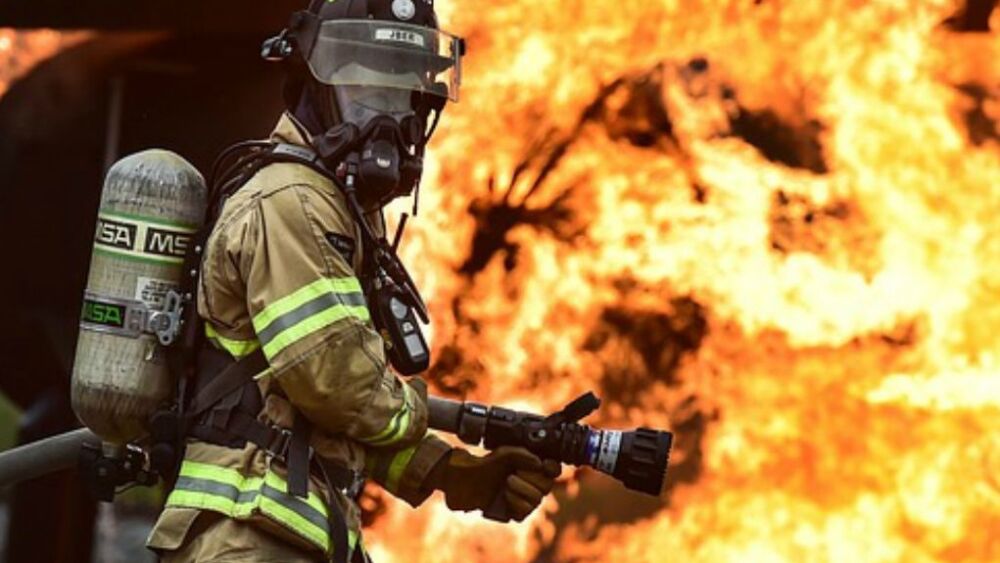There are some in the fire service who believe PPE that meets a specific standard has been evaluated in terms of its overall protective qualities as a full product. This belief is founded on the thinking that whole clothing items are the samples that are evaluated to determine if they have appropriate levels of thermal and physical protection. The reality is that this is only partly true.
Instead, many PPE standards are dependent on qualifying the individual layers or components that make up the product. For garments, very little full product testing is performed, mainly because of cost and the enormity of individual materials and components that go into their construction (which in turn allow a large range of product choices to firefighters). The results of this piecemeal testing are used to judge the overall protective performance of the finished item and to allow product certification. In contrast, certain items, such as SCBA, footwear and helmets, have a number of tests that are applied to the entire product.
Overall protection of the firefighter is only achieved when all the elements of the ensemble can be effectively integrated and elements do not create interferences. The responsibility for this integration falls to the fire departments, which choose various elements to make up their ensembles. Other than field testing by some organizations or as part of funded research programs, very little overall ensemble testing takes place despite a range of various existing methods, some of which have been validated. There is nothing that drives full ensemble testing because very few manufacturers are in a position to control all parts of the ensemble. Yet fire departments are in this very position of having to depend on their members’ protection in the ensemble they use.
Moving towards overall ensemble testing is a direction that more departments would like to take, but in the absence of incentives and standards, is not likely to happen. However, we now see a path forward to overcome this problem, which requires both an understanding for current predicament as well how to overcome it.
PPE material/component versus ensemble testing
Product testing is an important part of any PPE offering. Testing is intended to demonstrate that products provide the levels of protection for which PPE is intended. However, the vast majority of tests are conducted on individual materials or parts and these results are often translated, based on experience or judgment, or both, to represent how the overall product will perform. Very few tests actually emulate the full range of conditions products can be exposed to.
Therefore, many tests are designed to be more rigorous than the actual fireground environment or entail measurements that may not make much sense to the average firefighter. Some of the primary factors for using material or component tests rather than full product testing come down to cost or test reliability. Yet, the trade-off is the presumption that the material or component test can predict in combination with other material or component tests the overall performance of the product. Validation of these small scale tests is generally very hard to do, because in order to make the correlation with field performance, specific experience for evaluations has to be made to substantiate material/component tests, and especially associated requirements.
Ensemble testing involves (as the name implies) a full evaluation of all the elements that go into the ensemble, which should include at a minimum the:
- Garments
- Helmets
- Hood
- Gloves
- Footwear
- SCBA
In fact, other items, such as station/work uniforms or any accessories worn or carried by the firefighter should also be included for some types of testing. Most importantly, full ensemble testing sometimes also involves the actual wearing of the ensemble.
Ensemble testing can take several different forms; relevant performance categories include:
- Thermal insulation
- Overall flame and heat degradation resistance
- Physical injury protection
- Liquid and particulate protection
- Contamination resistance
- Ergonomics (i.e., range of motion and functionality)
- Impact on wearer physiology (i.e., propensity to heat stress)
- Situational awareness
- Serviceability
There are existing methods for several types of these ensemble assessments, some of which are quite mature in their application. For example, instrumented thermal manikin testing is applied for evaluating ensemble insulation against extreme flame and heat exposures. Yet, not all such tests are highly detailed. Various types of ergonomic assessments can be readily applied by fire departments as well as in research laboratories. In some cases, there can be a range of different tests all aimed at characterizing ensemble performance in meaningful ways that have varying levels of sophistication.
The need for more firefighter ensemble testing
Some in the PPE industry decry the need for ensemble testing because the tests are generally more variable than prevailing material or component evaluations and the associated costs of such testing. There are further concerns that the push for more ensemble testing is likely to limit fire service choices and be impractical to implement.
We argue that ensemble testing is the right direction for the fire service PPE industry because firefighters are facing a myriad of different choices and do not have the tools available for properly assessing protection choices and equally important assess trade-offs for different product selections. Moreover, reliance on individual standards that in turn use mainly material or component testing often do not capture integration or interoperability problems. This can be illustrated by a couple of examples.
Back in 2015, we reported on the topic of smoke particle infiltration of turnout gear. This article was highlighted by some relatively graphic photographs that showed how easily smoke particles penetrate through conventional ensembles. This full ensemble test illustrated the need to address interfaces and resulted in the structural firefighting protective clothing committee developing optional requirements for particulate-blocking hoods because the neck interface area was seen as one of the most vulnerable exposure areas of the firefighter’s body. While some of these findings may have been intuitive, industry did not take action until the original ensemble testing was performed. Related testing continues today as manufacturers and end users try to find ways to attenuate firefighter exposure to harmful particulates on the fireground.
When the 2008 edition of NFPA 1971: Standard on Protective Ensembles for Structural Fire Fighting and Proximity Fire Fighting, was released, it included a new requirement for a Drag Rescue Device (DRD), which is now a mandatory component of all new turnout garments. While a constructive idea for rapid extrication firefighters, we are still waiting to learn of one specific case, outside of training, where the DRD has been deployed to save a life. It is our belief that utility of the DRD is directly affected by the positioning of the SCBA and to some degree the protective helmet. Rapid intervention teams generally find it easier to grab hold of the SCBA or some other harness attached to the firefighter than relying on a DRD in getting a downed firefighter away from the fireground. If properly developed and applied, interoperability testing for rapid extrication of firefighters could result in more effective practices and ensemble designs for this purpose.
NFPA project to create standard PPE test methods
There is an attempt to introduce a new project within the NFPA for creating a standard on test methods that evaluate different forms of ensemble overall performance, interfaces and interoperability. The standard is yet to be defined, but it could take the form of a platform of different methods ranging from simple to highly sophisticated evaluations, which could be applied by both the PPE industry as well as the fire service. With the increasing complexity of ensembles for efficiently combatting physiological stress, reducing exposure to contaminants and maintaining protection over its service life, a new standard on ensemble performance testing is the best way to get the big picture overview of firefighter protection.
--
The views of the author do not necessarily reflect those of the sponsor.













